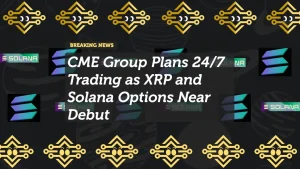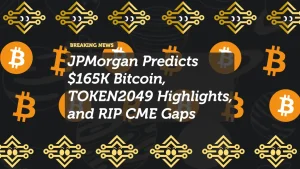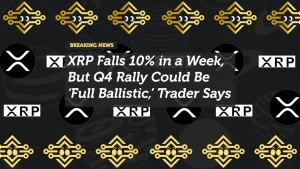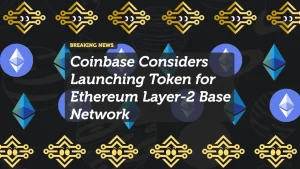
Pi Network Faces Troubles as Price Slumps Below $1 Despite $5B Market Cap
Pi Network launched into the crypto mainstream in February 2025 with high hopes, a strong community, and a promise to decentralize mobile-first mining. After years in development and millions of users mining Pi on their phones, the launch marked a turning point.
But within three months, the price has collapsed more than 75% from its $2.98 all-time high, now struggling to hold above $0.95. So what’s dragging Pi down?
Post-Launch Blues: KYC Friction and Locked Tokens
One of the first challenges came immediately after launch: KYC verification delays. Many early Pi miners—who had waited years—were unable to access their tokens due to strict verification procedures.
This affected:
- Trust among the broader user base
- Circulating supply expectations
- Token accessibility across platforms
In short, even the most loyal Pi pioneers couldn’t trade or use their tokens, leading to frustration and liquidity pressure in the market.
Still Not Listed on Tier 1 Exchanges
Despite Pi Network having a market capitalization exceeding $5 billion, it’s still not listed on Binance, Coinbase, Kraken, or OKX—a rarity for a top-30 crypto asset.
This absence affects:
- Liquidity
- Visibility
- Price discovery
- Institutional adoption
Why No Listings?
The crypto community is speculating that:
- The Pi Core Team hasn’t been transparent enough with their tokenomics and project structure.
- Exchange due diligence processes require clear compliance and disclosure before approving listings.
Until Pi addresses these concerns, Tier 1 listings may remain out of reach.
No DeFi, No Demand
A significant weakness post-launch is the lack of ecosystem development.
- No decentralized applications (dApps)
- No DeFi protocols
- No NFT infrastructure
This means no actual use cases to drive demand. The coin currently exists in isolation, with speculative interest as its only driver—a risky place to be in a volatile market.
“The lack of utility makes Pi’s market behavior reactive, not proactive. It follows the market—it doesn’t lead it.” — Crypto market analyst, @blockscope
Transparency Concerns Over $100M Pi Ventures Fund
In 2024, the team behind Pi Network announced a $100 million Pi Ventures Fund to back innovative projects within its ecosystem.
Three months later, the community is still asking:
- Where is the fund allocated?
- Which projects are being supported?
- How are community proposals being evaluated?
Without updates, enthusiasm is fading, and doubts are rising around execution and accountability.
Price Volatility: What Happened Last Weekend?
The Pi Network price spiked to $1.21 last weekend—a jump of over 50%—only to retrace back below $1 within 48 hours.
Here’s why:
- Thin liquidity makes it vulnerable to small buy/sell pressure
- No exchange arbitrage opportunities due to listing limitations
- No utility support to sustain interest
7-Day Price Chart Summary
| Date | Price |
|---|---|
| May 6 | $0.79 |
| May 7 | $0.82 |
| May 8 | $1.05 |
| May 9 | $1.21 |
| May 10 | $1.02 |
| May 11 | $0.96 |
| May 12 | $0.93 |
What Pi Network Needs to Regain Momentum
To break out of this post-launch stagnation, Pi Network will need to:
- Resolve KYC and token accessibility at scale
- Secure Tier 1 exchange listings through transparent project disclosures
- Kickstart DeFi activity on the network to build real demand
- Communicate clearly about ecosystem initiatives like the Pi Ventures Fund
Without these changes, Pi risks losing relevance, even with its large community and early mover advantage.
Final Thoughts: Faith vs. Fundamentals
Pi Network has a massive global community and a strong early story. But three months after launch, fundamentals—not faith—are determining price movement.
A community-driven coin needs more than hype; it needs infrastructure, transparency, and liquidity to succeed in a highly competitive market. Right now, Pi Network has work to do.
















